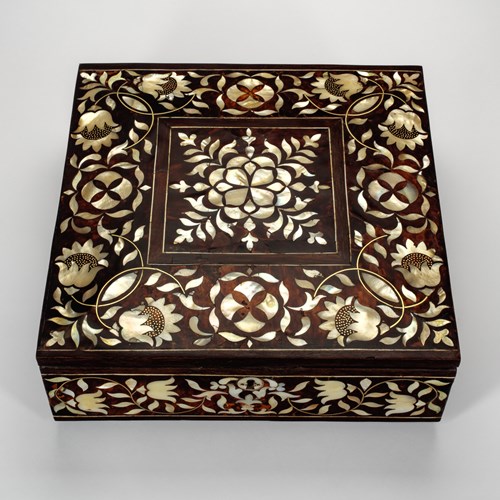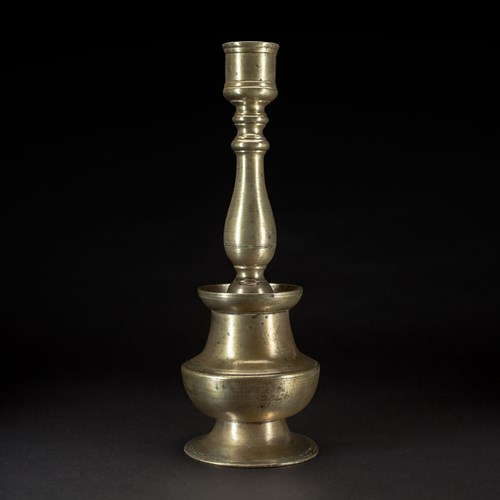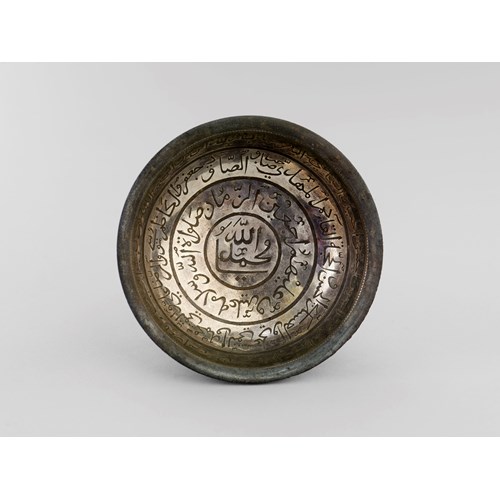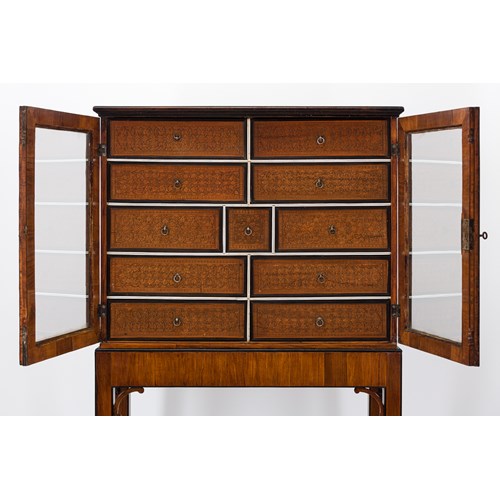Marketplace
Blue-and-white Ewer
Blue-and-white Ewer
Epoque Kangxi reign period (1662–1722)
Origine China
Medium Porcelain decorated in underglaze cobalt blue
Dimension 28 x 18 cm (11 x 7¹/₈ inches)
A blue-and-white ewer with a pear-shaped body with flattened, tapering sides, a flaring neck, flattened hexagonal mouth and splayed foot which both have horizontal collars, and a short curving spout. The design in blue on the ewer is similar to that found in the Topkapi Saray Museum (TKS 15/4576) with lid intact[1] with flowering trees growing behind pierced rocks. This is bordered on both sides by thin branches of flower sprays, the spout features cloud motifs, flowers, and dots. The rim and of the foot and the collar of the ewer is decorated with a chevron hatch design.
Comparative material:
Apart from the very similar one in the Topkapi Saray Museum, this form is seen in Indian metalwork, for instance the Bidri ewer at the Jagdish & Kamla Mittal Museum of Indian Art (76.1226. ME.5), Mittal, Jagdish. Bidri Ware and Damascene Work in Jagdish & Kamla Mittal Museum of Indian Art. Hyderabad, 2011, p. 58. This form is also seen from North India in Zebrowski, Mark. Gold, Silver & Bronze from Mughal India. Gold, Silver and Bronze from Mughal India. London, 1997, pp. 162-163. These indicate the inspiration and influence of Indian forms on Chinese porcelain craftsmen when producing for the Indian market.
[1] Krahl, Regina, Nurdan Erbahar, and John Ayers. Chinese Ceramics in the Topkapi Saray Museum, Istanbul : A Complete Catalogue III. London: published in association with the directorate of the Topkapi Saray Museum by Sotheby’s, 1986, p. 1009 (no. 2153)
外销印度市场
中国,康熙年间(1662——1722年)
Stock No.: A5624
Comparative material:
Apart from the very similar one in the Topkapi Saray Museum, this form is seen in Indian metalwork, for instance the Bidri ewer at the Jagdish & Kamla Mittal Museum of Indian Art (76.1226. ME.5), Mittal, Jagdish. Bidri Ware and Damascene Work in Jagdish & Kamla Mittal Museum of Indian Art. Hyderabad, 2011, p. 58. This form is also seen from North India in Zebrowski, Mark. Gold, Silver & Bronze from Mughal India. Gold, Silver and Bronze from Mughal India. London, 1997, pp. 162-163. These indicate the inspiration and influence of Indian forms on Chinese porcelain craftsmen when producing for the Indian market.
[1] Krahl, Regina, Nurdan Erbahar, and John Ayers. Chinese Ceramics in the Topkapi Saray Museum, Istanbul : A Complete Catalogue III. London: published in association with the directorate of the Topkapi Saray Museum by Sotheby’s, 1986, p. 1009 (no. 2153)
外销印度市场
中国,康熙年间(1662——1722年)
Stock No.: A5624
Epoque: Kangxi reign period (1662–1722)
Origine: China
Medium: Porcelain decorated in underglaze cobalt blue
Dimension: 28 x 18 cm (11 x 7¹/₈ inches)
Plus d'œuvres d'art de la Galerie




_T638563980981131436.jpg?width=500&height=500&mode=pad&scale=both&qlt=90&format=jpg)




